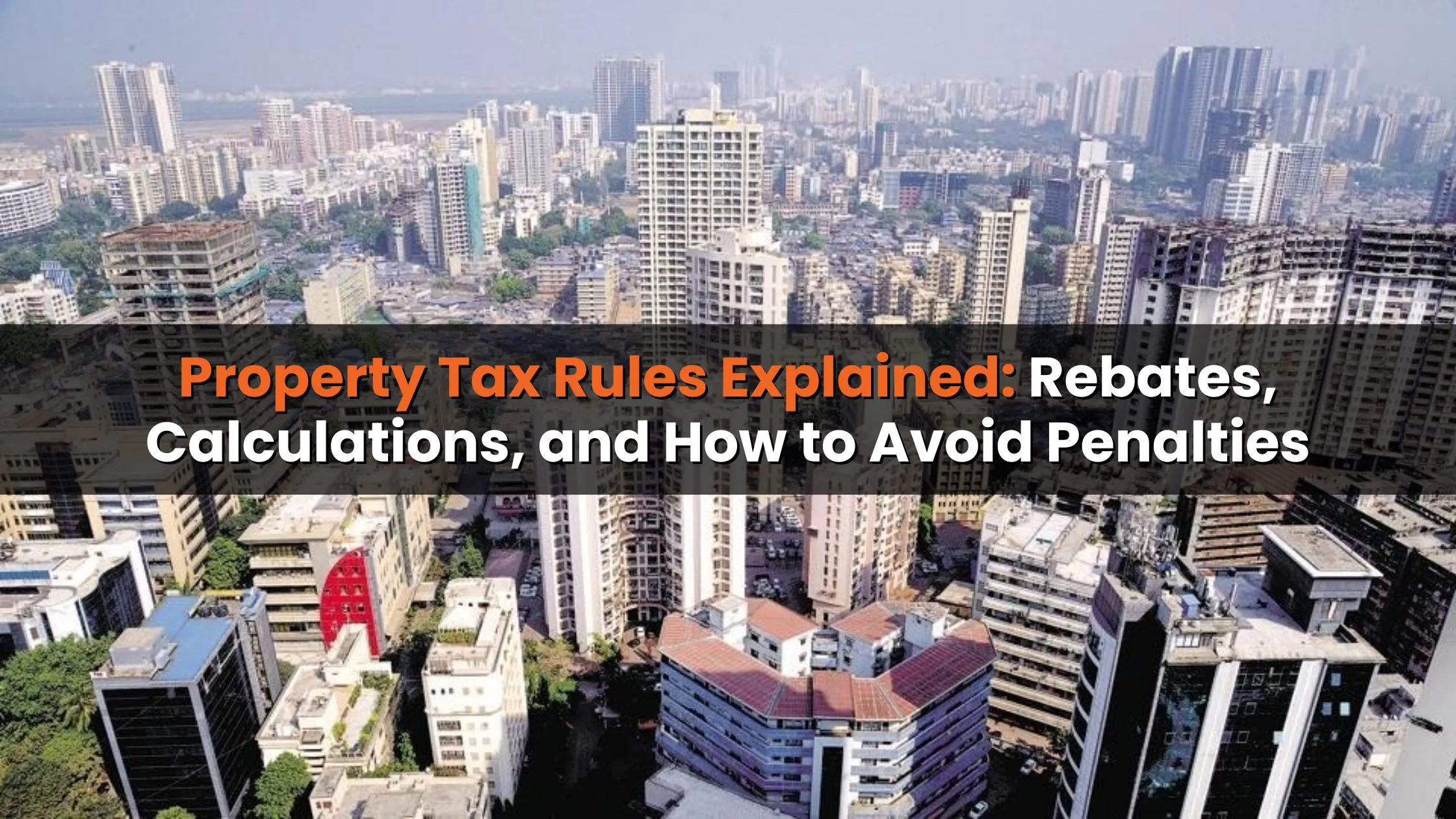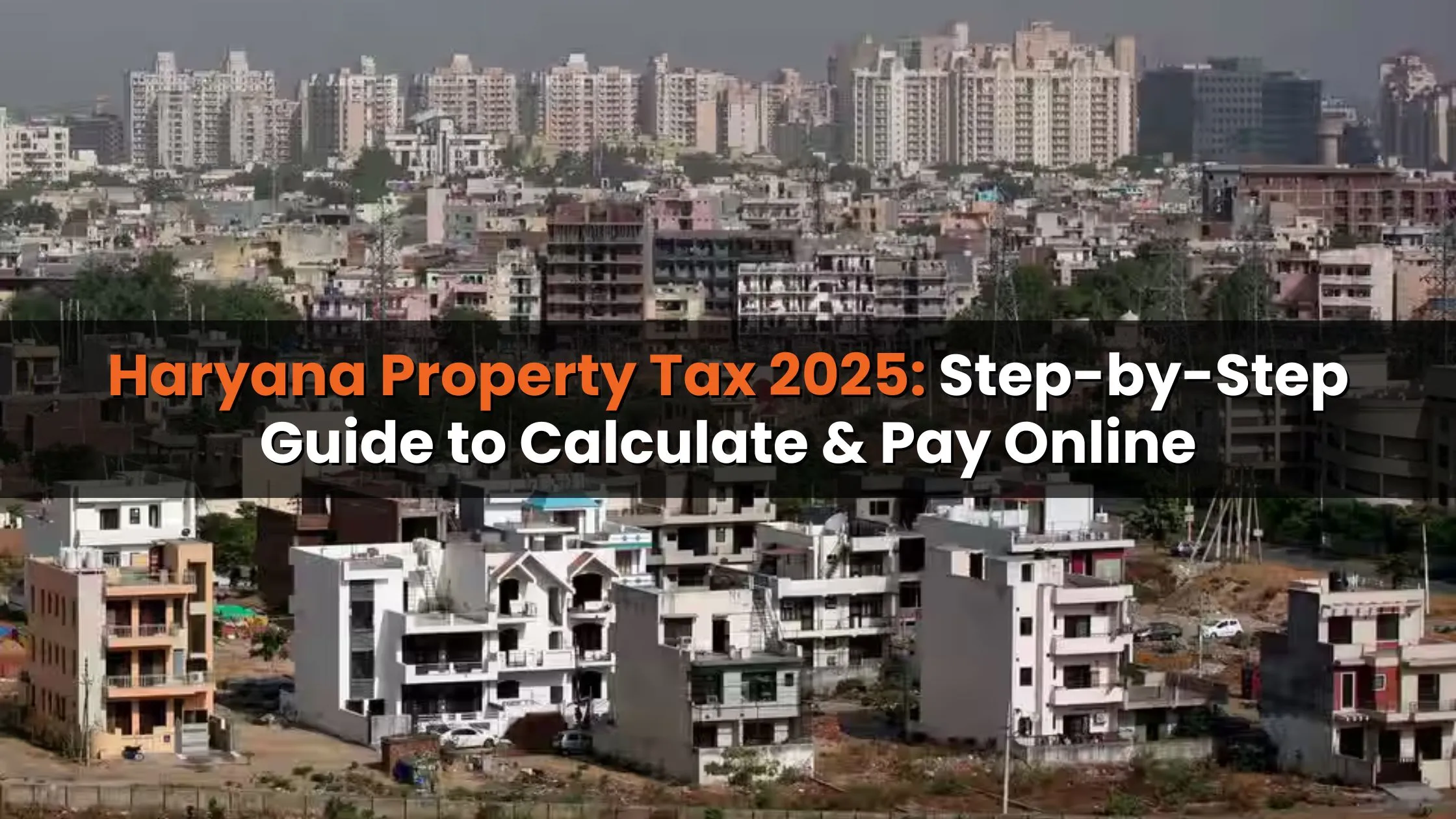Table of Content
Property tax is one of the essential civic obligations for homeowners, yet it remains one of the most misunderstood. Different cities follow different Property Tax Rules frameworks, making the process confusing for many. As a result, owners often struggle with calculations, miss out on rebates, or face penalties due to late payments. Fortunately, municipal bodies across India now offer self-assessment tools, digital payment platforms, and clearer guidelines, making the process far more transparent than before.
This article breaks down the key systems used to calculate property tax, rebates offered by local authorities, digital tools available to homeowners, and how to stay compliant without paying unnecessary penalties.
Why Property Tax Rules Differ Across India
Property tax falls under the State List (List II) of the Constitution, which means every state creates its own Property Tax Rules and empowers municipal corporations to implement it. As a result, there is no uniform calculation method across the country.
Municipal bodies decide tax rates and valuation methods based on urban development levels, infrastructure, and local revenue requirements. Factors such as the property’s location, category of use (residential, commercial, institutional), building age, and built-up area also influence the final payable amount. This fragmentation explains why two similar properties in different cities or even different zones of the same city often carry different tax liabilities.
Also Read: How to Pay Your Property Tax Bihar : Complete Step-by-Step Guide
The Three Main Systems Used for Property Tax Calculation
1. Unit Area Value System
Cities like Delhi and Bengaluru follow the unit area system. Here, tax is calculated based on a pre-assigned value per square foot or square metre of the built-up area. Properties are placed into different categories depending on the zone, usage type, and building quality. Local factors such as infrastructure, accessibility, and demand influence these predetermined values, leading to significant variations across neighbourhoods.
2. Capital Value System
Mumbai uses the capital value system, where the tax is linked directly to the market value or guideline value of the property. Ready reckoner rates released annually by the state become the basis for calculation. These rates reflect the official market value of land and buildings, making this system more responsive to market fluctuations.
3. Annual Rental Value System
Cities like Chennai adopt the annual rental value method. In this model, the tax is calculated based on the expected rental income a property can generate, irrespective of whether it is actually rented out. This can result in differing liabilities even among properties located in the same locality but built differently or used differently.
Factors and Rebates That Influence Your Tax Bill
Key Factors Affecting Tax Assessment
A homeowner’s tax burden depends on several variables, including:
- Whether the property is residential or commercial
- Tier classification of the city Tier-1, Tier-2, or Tier-3
- Built-up area and number of floors
- Age, condition, and occupancy status of the building
These elements determine how a particular Property Tax Rules is applied to an individual property.
Common Rebates Offered by Municipal Corporations
Most municipal authorities offer various rebates that can significantly reduce tax outgo. Some commonly available ones include:
- Senior citizen rebate
- Women owner rebate
- Floor-wise rebate
- Early or lump-sum payment discount
- Eco-friendly property rebate
- Special rebates for war widows, ex-servicemen, and persons with disabilities
Being aware of these provisions can help taxpayers lower their annual liabilities.
How to Assess and Pay Property Tax Digitally
Determining Property Value Online
Almost all major municipal corporations now provide online tools for self-assessment. Owners can enter details like:
- Property type (apartment, independent house, shop)
- Built-up area
- Zone or ward
- Usage category
These platforms automatically generate an estimated annual value or rental value based on applicable Property Tax Rules parameters. Many states also publish ready reckoner or guideline values that serve as official benchmarks. When in doubt, owners can consult a certified valuer for accurate assessment.
Convenience of Online Tax Payment
Most cities have implemented dedicated online portals and mobile apps that enable hassle-free tax payments. Popular examples include:
- MCGM (Mumbai)
- MyGHMC (Hyderabad)
- BBMP Sahaaya (Bengaluru)
- NDMC311 (Delhi)
These portals allow users to view property details, check outstanding dues, make payments via UPI, debit/credit cards, or net banking, and download instant receipts. Features like SMS alerts and payment history tracking further improve the user experience.
Penalties, Interest, and Grace Periods
What Happens If You Miss the Due Date
Penalties for delayed property tax payments differ across municipal bodies. Generally, overdue amounts attract 1–2% monthly interest, which continues to accumulate until dues are cleared. Prolonged non-payment may lead to additional charges or notices issued by the municipal authority.
Grace Periods and Amnesty Schemes
Some cities offer short grace periods to provide relief to taxpayers. Municipal bodies occasionally introduce amnesty schemes that waive or reduce penalties and interest if outstanding amounts are cleared within a specified window. Staying updated with local notifications can help homeowners benefit from such limited-time opportunities.
Also Read: How to Pay Property Tax in Delhi 2025: Full MCD Guide
How to Stay Compliant and Avoid Penalties
Compliance becomes simpler when property owners stay informed about updates in their city’s Property Tax Rules. A few practical steps include:
- Keeping property-related details up to date on municipal portals
- Setting calendar reminders for due dates
- Regularly reviewing tax assessments and revised rates
- Using digital platforms for timely payments
- Understanding available rebates and applying them proactively
These practices ensure homeowners never miss deadlines and avoid unnecessary financial burden.
Conclusion
Understanding the Property Tax Rules framework in your city helps you estimate tax more accurately, claim applicable rebates, and avoid penalties. With municipal bodies embracing digital tools, the assessment and payment process has become far more transparent and accessible. Staying aware of annual updates, deadlines, and online facilities ensures a smooth, stress-free tax experience for every property owner.










Ans 1. Property tax calculation varies by city. Some use the unit area system, charging tax based on built-up area and property category. Mumbai follows the capital value system linked to market value, while Chennai uses the annual rental value based on potential rental income.
Ans 2. Each state and municipal corporation sets its own rules based on local infrastructure, property usage, building age, and revenue needs. This explains why similar properties can have different taxes in different cities.
Ans 3. Yes. Common rebates include discounts for senior citizens, women owners, eco-friendly properties, early payments, and special provisions for ex-servicemen or war widows.
Ans 4. Yes. Most cities offer online tools and portals, such as MCGM in Mumbai, MyGHMC in Hyderabad, BBMP Sahaaya in Bengaluru, and NDMC311 in Delhi, for easy calculation and digital payment.
Ans 5. Late payments usually attract monthly interest, often 1–2%, and prolonged delays may incur extra fines or notices. Some cities offer short grace periods or amnesty schemes to reduce penalties.
Ans 6. Keep property details updated, check tax assessments regularly, pay on time using digital portals, and apply eligible rebates to stay compliant and avoid fines.
Ans 7. It helps estimate tax accurately, claim rebates, and avoid penalties. Digital tools and municipal guidance make the process easier and stress-free.